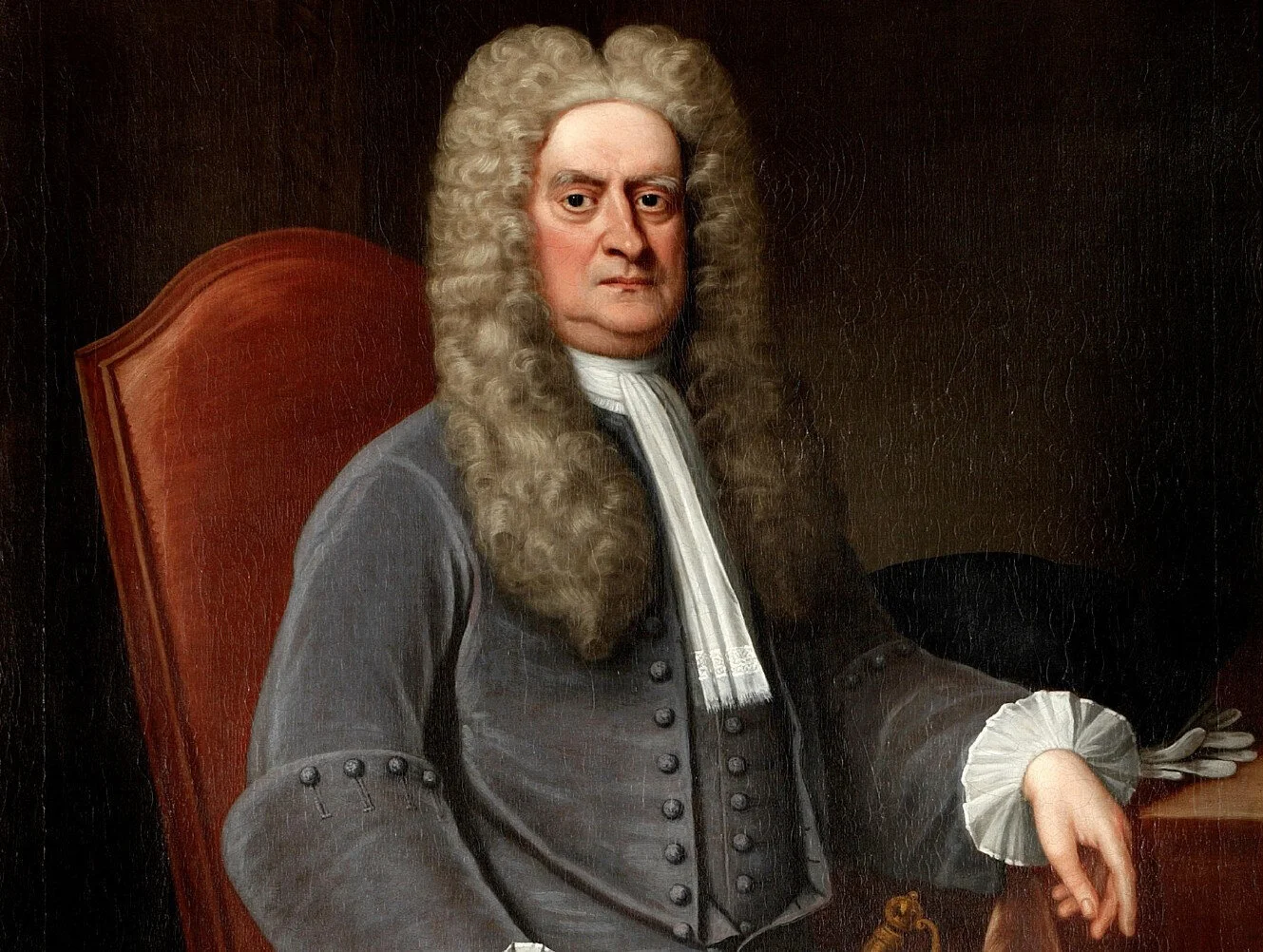The Life of Sir Isaac Newton (1643-1727)
Sir Isaac Newton was an English mathematician, physicist, astronomer and author. Born on Christmas Day, 1642, he went on to become one of the most influential mathematicians and physicists of all time. But how did a premature pipsqueak grow to be the father of calculus and the discoverer of gravity?
Born in a tiny hamlet in Lincolnshire to a recently widowed mother, Newton attended The King’s School in Grantham, equipping him with an education in Latin and Greek. It is also believed that it was here that Newton found his love for mathematics. After having been taken out of school by his mother to pursue a life of farming, a school master begged her to allow Isaac to return. Upon his return, Newton, motivated largely by revenge against a school bully, became the top ranked student at the school. In June of 1661, he began studying at Trinity College Cambridge. Working as a valet as a way to pay for his education, Newton received a full scholarship in 1664, allowing him to receive an MA. At the time, the teachings of the college were mainly centred on the greek philosopher Aristotle, however Newton also studied the astronomers Galileo, Thomas Street and Kepler.
In 1665, Newton discovered the generalised binomial theorem, an idea which evolved and eventually became the entire science of calculus. Although the Great Plague interrupted his studies at Cambridge, it was back at home in Woolsthorpe that Newton developed his theories of Calculus, Optics and the Law of Gravitation. Newton has been said “to distinctly advance every branch of mathematics then studied” He was hailed as a genius by the academics of his time. His infamous dispute with the German mathematician Leibniz is still remembered today, as the two mathematicians argued over who the true progenitor of calculus was, Leibniz is believed to have published full methods before Newton published an idea.
From 1670-1672, Newton lectured on the subject of Optics. He discovered that coloured light could be focused into white light with the aid of a lens and a secondary prism, in the same way that white light could be separated into the seven colours of the visible spectrum, as seen famously on the album cover of Pink Floyd’s The Dark Side of the Moon.
Of course, Newton was also the inventor of the theory of gravitation. He often told the infamous story himself, that while walking though his gardens, Newton was spurred to inspiration when he watched an apple fall from a tree. This amusing anecdote then became the idea of the universal force of gravity. Along with his writings on gravity, Newton revolutionised the academic field of mechanics with his laws of motion.
Sir Isaac Newton died in his sleep in London on the 20th of March, 1727. Buried in Westminster Abbey, he will always be remembered as one of the most influential and pioneering figures in the world of mathematics.
Why does Finland offer the Best Mathematics?
Finland has long been known to offer one of the worlds best education systems, specifically, in mathematics and science. Its holistic approach to teaching allows for a much more amiable classroom environment and a ‘teach-to-learn’ rather than a ‘teach to pass the test’ perspective. Finnish school days only last 5 hours, with little to no homework. Their laid back, stress-free design succours students in thriving both inside and outside of the classroom. This modern, student-centred outlook, along with very high requirements for teaching staff (All teachers must have a master’s degree and their teaching performance is regularly assessed) allows for Finland to outrank the United States education system, and be gaining very quickly on Asian countries.
Finnish Maths teachers also place a large amount of focus on and highlight the importance of one-to-one assistance and personalised, detailed feedback. Not having enough time for each student is a well known issue especially in countries such as the UK and United States where classroom sizes are considerably larger. Teachers attempt to tackle this by making sure they interact with the students who need the most assistance first, and walk them through their desired topic as well as providing feedback on how they can best boost their understanding of the topic.
Finnish mathematics curriculums tend to circumvent superficial learning and focus more on allowing children to build a passion for the subject themselves. Students are provided with challenges varying in style and difficulty rather than specific exam questions, allowing them to acquire flexible problem solving skills, and a very deep understanding of the subject with a unique, adaptable skill set. Along with this, Finnish schools also focus on developing and transforming the mindsets of their pupils: metacognition is an essential skill. A ‘growth mindset’ is the key to understanding that mistakes are opportunities for growth, and that criticism is very valuable. Taking this attitude to Mathematics sparks a rapid improvement in learning.
The PISA (Programme for International Student assessment) is a test taken by 15 year old students, measuring their ability in reading, mathematics and scientific knowledge. Finnish students consistently perform well above average, scoring 507 points in Mathematics, compared to an average of 487 points in other countries such as Austria, Belgium, France, Germany and the majority of other European countries. Clearly, the innovative design of the Finnish Education System has a very successful impact.

